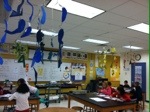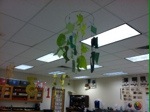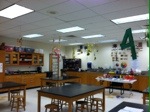For years I have been trying to find a way to make my students take the time to reflect upon their art work. When we joined Artsonia this year, I thought I had found the answer as I asked my students to write 3-5 sentences telling the viewer why they had created their art when they published their artwork. For some projects, I would give them writing prompts; i.e., how do you feel about the finished piece or how did you use color in your artwork? Even though they were excited to publish their art and the artist statements were to remain short, their writings were still lacking in quality of reflection, depth and basic enthusiasm.
So, once again, I decided to try something new. I created a rubric like reflection based upon the formative assessment theory of “promoting learning by informing instruction” as stated in Understanding Formative Assessment Insights from Learning Theory and Measurement Theory by Elise Trumbull and Andrea Lash. Posing three possible artist statements worth 1-3 points, the examples given were based upon a current project and written in the first person with my own art example being used to reflect upon. After reading the possible reflections and understanding why they were given their point values students responded with their own reflection of their artwork.
The concrete examples gave students a positive model for their own writing and took away the question of what and if they had given enough thought to their writing. The depth and length of their reflections increased as well as their overall enthusiasm to writing in the art room. By reading the reflections, I have gained a better awareness into why they chose certain elements of art and what personal items may have influenced their artwork. It has also proven that writing across the curriculum has several beneficial outcome for all of us.


